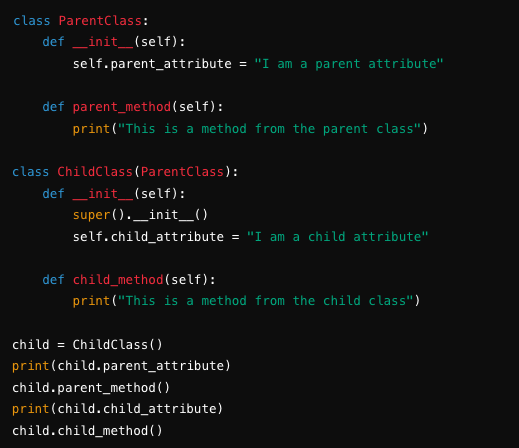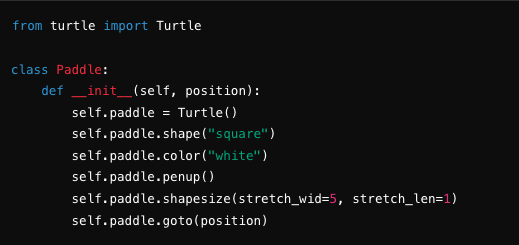While writing some lines of code for a project I am working on called PONG, I got confused about when to use the inheritance approach. Initially, I created an object using a class and then recalled it to add attributes or methods. This method seemed to work, but I noticed something interesting when I compared my project with another developer’s version.
In their version, the developer used inheritance to access the attributes of the imported class. This led me to explore the differences between the two approaches and understand why inheritance is the better choice in this case.
The Power of Inheritance
Inheritance is a fundamental concept in object-oriented programming (OOP). It allows a class to inherit attributes and methods from another class, known as the parent or base class. The class that inherits is called the child or derived class. Here’s a simple example:

In this example, ChildClass inherits from ParentClass. It gains access to the parent’s attributes and methods, making the code less verbose and easier to manage.
Reducing Boilerplate Code
Boilerplate code refers to sections of code that are repeated in multiple places with little to no variation. While it is sometimes necessary, excessive boilerplate can make the code harder to read and maintain.
Using inheritance helps reduce boilerplate by allowing the child class to reuse code from the parent class. This leads to cleaner and more efficient code. Here’s an example from my PONG project:
Version 1: Composition Approach

In this version, I created a Paddle class that composes a Turtle object. While this approach works, it introduces some redundancy and can make the code more verbose.
Version 2: Inheritance Approach
In this version, Paddle inherits from Turtle. This allows Paddle to directly access Turtle‘s methods and attributes, reducing redundancy and making the code cleaner and more maintainable.
Conclusion
Both inheritance and direct object manipulation are valid approaches, but they serve different purposes. Inheritance is particularly useful for reducing boilerplate code and improving code readability and maintainability. By understanding and applying inheritance appropriately, you can create more efficient and error-free code.
By using inheritance, the final code is less verbose, and attributes and methods are accessed directly, helping to reduce potential typing errors and redundancy.
Final Thoughts
When deciding between inheritance and other methods, consider the complexity and structure of your project. Inheritance can greatly simplify your code and enhance its reliability, making it a valuable tool in your programming toolkit.


Leave a Reply